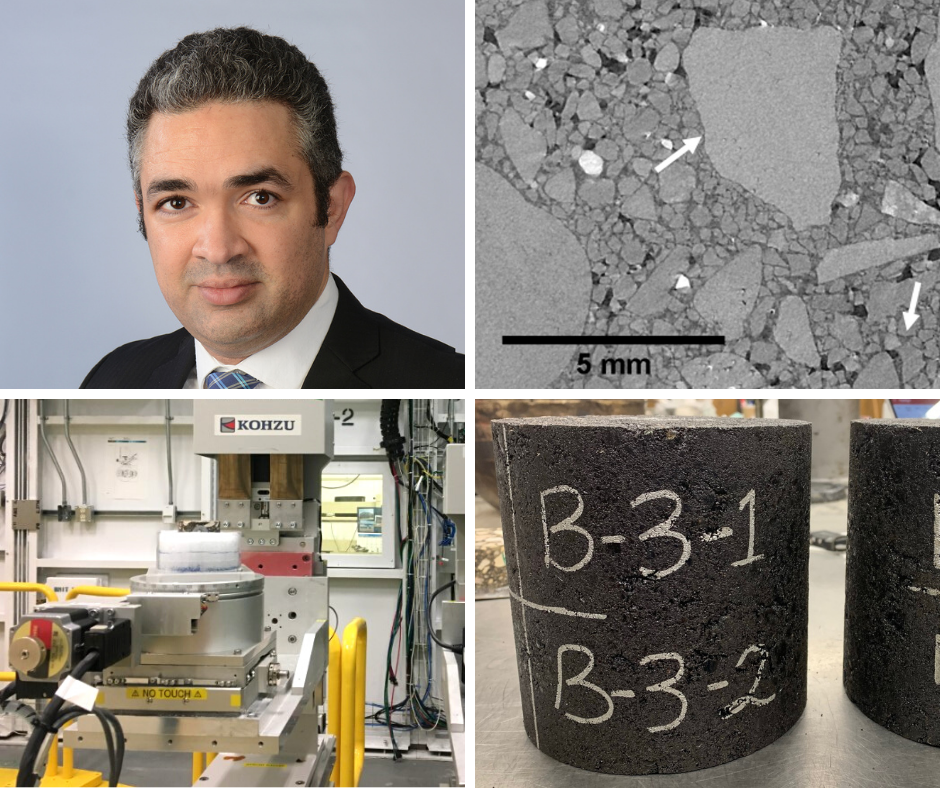Reducing potholes in cold climates
Could recycled materials help to build durable roads in areas with significant temperature swings like Saskatchewan?
We all hate the potholes that appear on the roads as the weather starts to change.

Haithem Soliman and Mai Alawneh with the College of Engineering at the University of Saskatchewan (USask) are conducting experiments to see if recycled materials can be used to build durable roads in climates with significant temperature swings between seasons, like those seen in Saskatchewan.
“Our project aims to evaluate the impact of Canadian winters and freezing conditions on the performance of roadway materials,” said Soliman.
As part of their study, the team recently utilized the BMIT beamline at the Canadian Light Source (CLS) at USask.
“The advanced imaging technology at the CLS allowed us to see the damage within roadways and asphalt materials at a very small scale,” stated Soliman.
The group hopes their findings will one day lead to sturdier roadways that are produced with recycled materials and therefore with a lower carbon footprint.
This research received support from the Saskatchewan Ministry of Highways and Infrastructure and the Natural Sciences and Engineering Research Council of Canada.
Source: https://www.lightsource.ca
